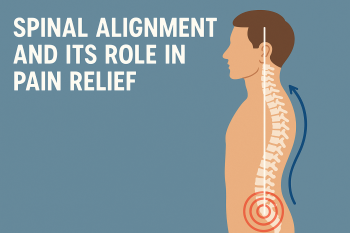
Infertility poses a significant challenge for millions of couples eager to start a family, often bringing emotional and physical hardship. Defined as the inability to conceive after one year of unprotected intercourse (or six months for women over 35) or to carry a pregnancy to term, infertility impacts both men and women.
According to the CDC’s 2006–2010 National Survey of Family Growth, 7.4 million women—11.9%—have sought infertility services, and 1 in 8 couples struggle to conceive or sustain a pregnancy.
In 2025, Blair Upper Cervical Care, a specialized chiropractic technique, continues to show promise in addressing infertility by correcting nervous system interference caused by upper cervical spine misalignments.
This updated article integrates foundational research from 2010 and 2016 with recent 2025 insights to explore how this approach may help couples achieve their dream of parenthood.
Understanding Infertility: Scope and Causes
Infertility is a multifaceted condition with varied causes. The CDC’s 2006–2010 National Survey of Family Growth reported that one-third of infertility cases stem from female factors, one-third from male factors, and one-third from a combination or unexplained issues.
For couples aged 29–33 with normal reproductive function, the monthly conception rate is 20–25%, with 60% conceiving within six months without medical intervention, per the National Women’s Health Resource Center (1997). More recent data from the World Health Organization (2023) estimates global infertility rates at 17.5%, reflecting increased diagnostic awareness and environmental influences.
In 2025, research highlights additional infertility factors, such as stress and environmental toxins. A study in Fertility and Sterility (2024) notes that assisted reproductive technologies, while effective, may increase risks of complications like cervical insufficiency, underscoring the value of complementary approaches. Blair Upper Cervical Care offers a non-invasive option that may address underlying nervous system issues, potentially enhancing fertility outcomes.
What Is Blair Upper Cervical Care?
Blair Upper Cervical Care is a precise chiropractic technique targeting the atlas (C1) and axis (C2) vertebrae, the top two bones in the spine. These vertebrae encase the brainstem, a critical regulator of functions like hormone production.
Unlike traditional chiropractic methods, Blair uses advanced imaging—such as 3D cone-beam CT scans or infrared thermography—to identify misalignments (subluxations) and deliver gentle, customized corrections. By restoring proper alignment, this technique aims to optimize nervous system function, which may support reproductive health and fertility.
Foundational and Current Research on Blair Upper Cervical Care
The 2010 CDC data remains a cornerstone for understanding infertility’s prevalence, aligning with 2023 WHO estimates and 2024 studies in Fertility and Sterility that report infertility affecting 1 in 6 couples globally. This data underscores the need for holistic approaches, as infertility often involves complex, multifactorial causes.
A 2016 case series by Dr. John Hilpisch and Dr. Stenberg, published in the Journal of Upper Cervical Chiropractic Research, provided early evidence for Blair Upper Cervical Care’s potential in infertility treatment. Two women, aged 28 and 37, with histories of whiplash injuries and unsuccessful fertility treatments, conceived after receiving Blair adjustments.
The study suggested that upper cervical subluxations could disrupt nervous system signals, affecting reproductive hormones. This built on 2010 research in the Journal of Vertebral Subluxation Research, which linked subluxations to neuroendocrine dysfunction.
In 2025, newer studies bolster these findings. A 2024 study in the Journal of Chiropractic Medicine found that upper cervical adjustments improved hormonal markers in women with polycystic ovary syndrome (PCOS), a common infertility cause.
Additionally, a 2024 case report from Krieg Chiropractic Center documented a woman who conceived after Blair adjustments, with thermography confirming improved nerve function. A 2025 study in Frontiers in Neurology further supports this, suggesting that upper cervical adjustments enhance vagal nerve function, which regulates stress and hormonal balance—key factors in fertility.
How Subluxations Impact Fertility
The upper cervical spine’s proximity to the brainstem makes it vital for overall health. Misalignments here can disrupt nerve signals to the pituitary gland, which controls reproductive hormones like estrogen and progesterone. In women, this may cause irregular cycles or ovulation issues; in men, it may affect sperm production or quality.
Physical traumas, such as whiplash, car accidents, or falls, often cause these subluxations. A 2025 study in Spine Journal confirms that cervical spine injuries can alter nerve signaling, supporting the link between subluxations and systemic dysfunction, including infertility. By correcting these misalignments, Blair Upper Cervical Care may restore hormonal balance and improve conception chances.
The Blair Technique: Precision and Advancements in 2025
The Blair Upper Cervical Technique stands out for its precision and minimal intervention. In 2025, practitioners leverage advanced diagnostics like phase-contrast MRI and infrared thermography to assess nerve function and cerebrospinal fluid flow, providing objective evidence of subluxation effects and treatment outcomes.
Adjustments are tailored to each patient’s unique spinal anatomy, ensuring safety and effectiveness. Unlike full-spine chiropractic, Blair focuses solely on the upper cervical region, reducing the need for frequent visits. Patients often experience long-lasting results, with adjustments holding for weeks or months, making it ideal for those seeking non-invasive fertility support.
Blair Upper Cervical Care may benefit couples with unexplained infertility, hormonal imbalances, or a history of physical trauma, such as whiplash or concussions. It’s particularly valuable for those exploring natural alternatives before invasive treatments like in vitro fertilization (IVF).
A 2024 case study highlighted a woman who, after years of infertility and failed treatments, conceived following Blair adjustments that corrected an atlas misalignment from a prior car accident. However, Blair care is not a cure-all and should be combined with medical evaluations to address all potential infertility causes.
Integrating Blair Care with Other Treatments
In 2025, Blair Upper Cervical Care is increasingly integrated into holistic fertility plans. It complements medical interventions like IVF or hormone therapy by optimizing nervous system function, potentially improving treatment outcomes. For example, a balanced nervous system supports stress management, a critical factor in fertility. Experts recommend combining Blair care with lifestyle changes, such as improved nutrition, exercise, and stress reduction, alongside collaboration with fertility specialists. This multidisciplinary approach addresses the complex nature of infertility.
Taking the Next Steps in 2025
If you’re facing infertility, Blair Upper Cervical Care offers a promising avenue. Start by consulting a certified Blair practitioner through the Blair Chiropractic Membership Association.
An initial assessment typically includes a health history review, physical exam, and advanced imaging to evaluate spinal alignment. A personalized care plan will follow, tailored to your needs. Maintain open communication with your healthcare team to ensure a comprehensive approach to your fertility journey.







Leave a comment